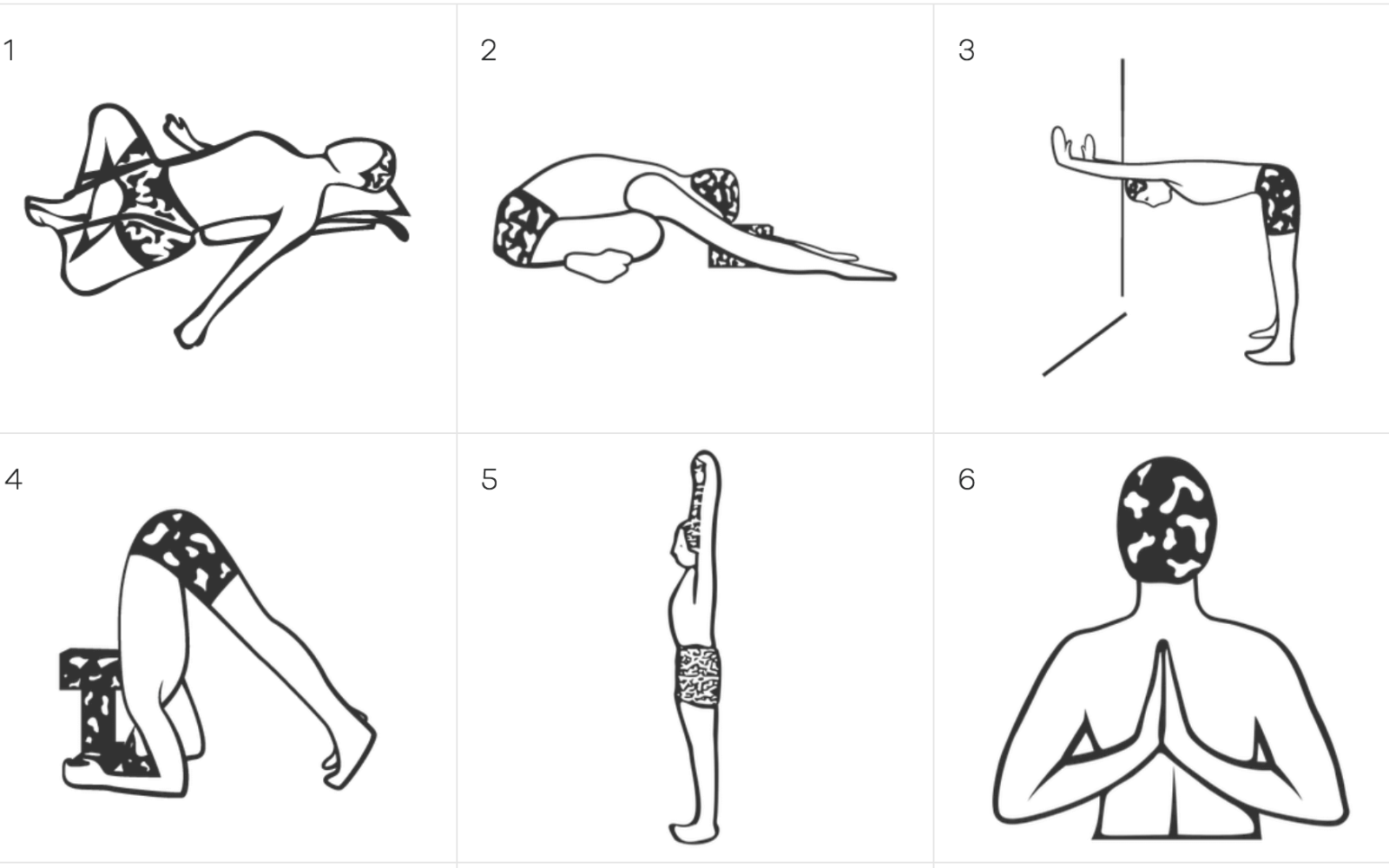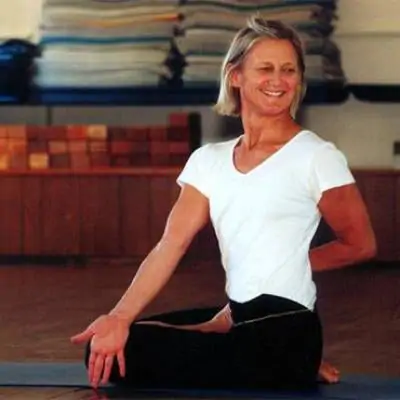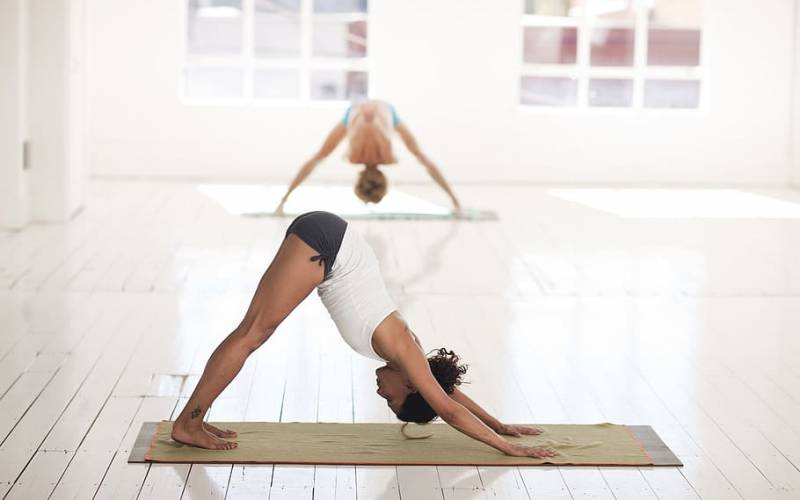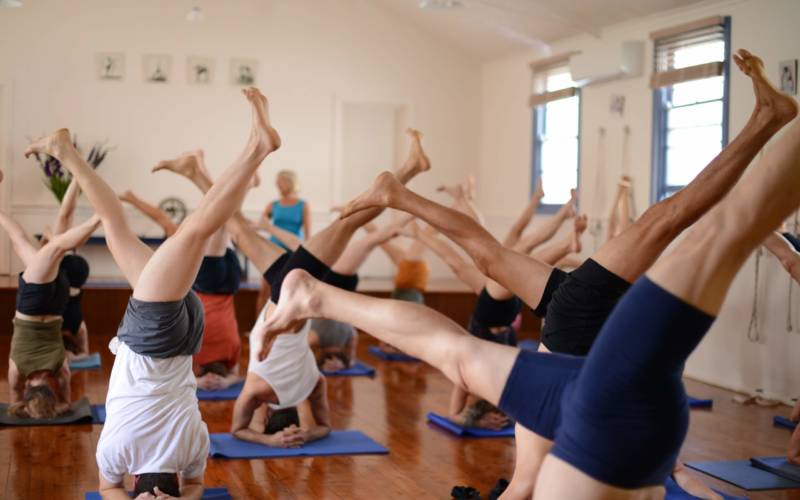As we move further into yoga, it is helpful to be open to change, to allow ourselves to see things from another angle, to not baulk at difficulty.
Why sequencing is important in Iyengar yoga
The sequences in Iyengar yoga are not set in stone. Sequencing varies according to many different factors, including: group of postures, aim of sequence, level of experience of the student, and state of mind when approaching a session.
The time of day may affect how you go about your practice, and, certainly, your energy or the state of your body will influence your choice of poses, and approach to sequencing.
As teachers, we often say that you can make or break a session by how it is sequenced. That means that no matter what our focus is, whether it be forward bends or backbends, standing poses or inversions, whether the aim is to energise, to quieten, or to stabilise, some fundamental principals are always applied.
The application may be more strict or more loose, according to the background of the students. With more experience, we have some leeway and can apply the principals a little more informally, as long as our intention is clear.
In the beginning, it is best to follow some set guidelines so that you can begin to understand the purpose and then the effect of different sequences.
The arc of a sequence
Some sessions will start with actions to lift and focus the mind, and others may start with more physical actions, but both those things will tangibly merge at a certain point. In yoga, we aim to link the body to the mind, and the mind to the body, through our practice.
We may use motion to energise, or hold poses for longer to stabilise our minds and bodies and to improve overall attention. Like a good arc to a story, we build up towards the central point of the sequence and then come back to neutral.
To assist with returning to neutral, we normally will do Sarvangasana (Shoulderstand) or a few energy quietening poses towards the end of a session, followed by Savasana. Savasana signals to us that the session is concluding. While some of us may be in a rush to return to our day after a yoga session, this return to neutral is important, and we place great emphasis on it in all of the Yoga Vastu materials.
The importance of inversions
Inversions should be practised every day, as they have wonderful health-giving properties in the way that they affect the nervous system, circulation, and blood flow.
They may be practised separately from the main practice, for example, in the afternoon or at the end of the day, but are typically added into all of our practice sessions.
The inversions that you do can be flexible: Sirsasana along with its alternatives, Sarvangasana, or one of its alternatives, such as Setu Bandha or Viparita Karani.
It is important to remember that one of the basic principles of Iyengar yoga is balance. This is why we always say that Sarvangasana, a cooling, quietening pose should be practised for as long as, or for longer than Sirsasana, an energising or heating pose
How to start a yoga session
Some guidance in setting up a practice routine can be helpful, especially in the beginning.
In our materials on Yoga Vastu and at my physical studio, we often start with the same four to five poses: a supine, chest opening pose, such as Supta Virasana or Supta Baddhakonasana, Uttanasana, Dog Pose (Adho Mukha Svanasana), Full Arm Balance (Adho Mukha Vrksasana) and Elbow Balance (Pincha Mayurasana).
I find this regular start to be generally useful, as these poses are mentally and physically energising, and they are postures that bring our mind, our attention, into the room. This group of asanas may start to define for us the flavour of a yoga session and can create the “space” to move away from the day’s activities and bring us onto our mat.
This “routine” may also help us see ourselves more clearly on any given day: what ingredients do I have to work with today? How do I actually feel today? How does it compare to yesterday, both mentally and physically?
This sort of self- observation can help us get to know ourselves a bit better and can assist us in approaching each practice with subjective information about what is needed on that day.
Modifications to a sequence
There is no ‘ultimate sequence’ or any definitive way to approach a group of postures. With experience though, we do start to become better at identifying what we need to cover in any session.
Therefore, although you will see a number of set postures, you will occasionally need to modify an asana for a bad back, or knee, or for the days of the menstrual sequence.
I have not included those modifications in the sequences on Yoga Vastu. This kind of instruction is best for teacher-assisted guidance in your regular classes. There are also some specific sessions for backs, or knees, or menstruation covered with us online. Expanded options will become available as we move forward.
Mostly we have applied a reasonably “classical” approach, that is, a more standardised way of coming into different categories of postures. But with experience and through your own practice and further learning you will be able to explore different options and a varied use of props and supports according to your own needs.
Ultimately, all practises are aimed at learning, at observing ourselves, at using asana as a vehicle for self-exploration.
We also can do sessions to just “do”, or to change our energy through motion, or do sessions to just ‘be’, remaining physically static in poses to let the asana work for us.
The important thing is to start to see the difference between different sets of poses, and then to start to choose effectively what might be most helpful in any given moment.
Yoga, practice and lessons for our day to day
Practice is a tool to learn more about ourselves and to create wellbeing physically, emotionally, mentally.
However, at a deeper level, yoga practice is not just aimed at meeting the requirements of the moment, even if this is a nice bonus, but it also serves to challenge our very perceptions of ourselves and even of what yoga is. As we move further into yoga, it is helpful to be open to change, to allow ourselves to see things from another angle, to not baulk at difficulty. This can be useful on and off the mat.
We may start to notice that the challenges we encounter are sometimes as much mental as they are physical, but it is through the body that we can most tangibly alter our mindset. Yoga offers a glimpse into our own potential, it opens up new doors. It takes us, step by step, and with daily guidance through our practice experience to trust to venture further into the unknown.
Start simple, without expectations or preconceptions, even just through practising some of these regular and basic routines.








